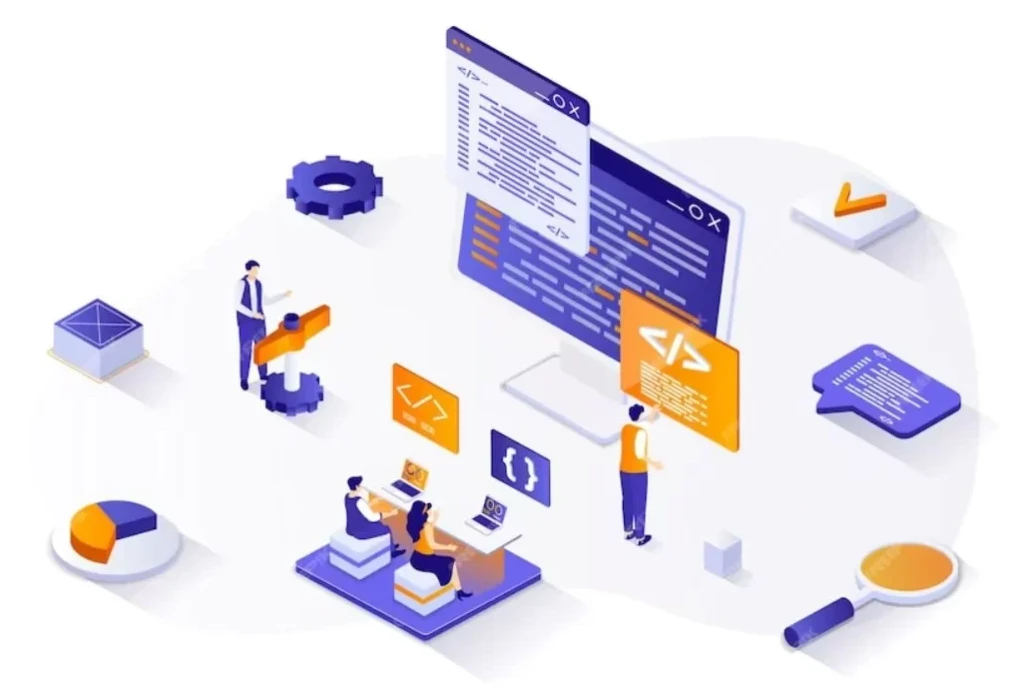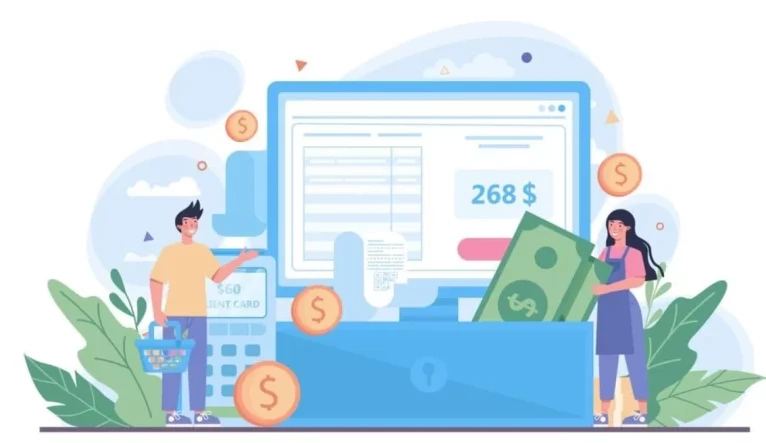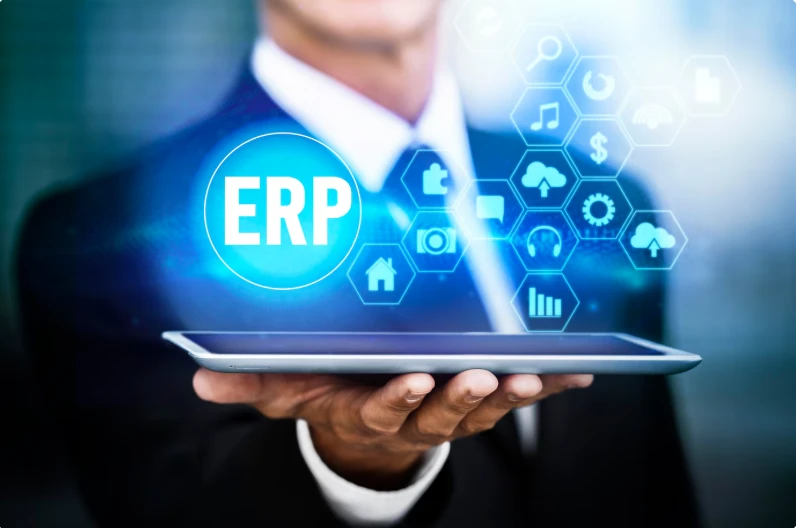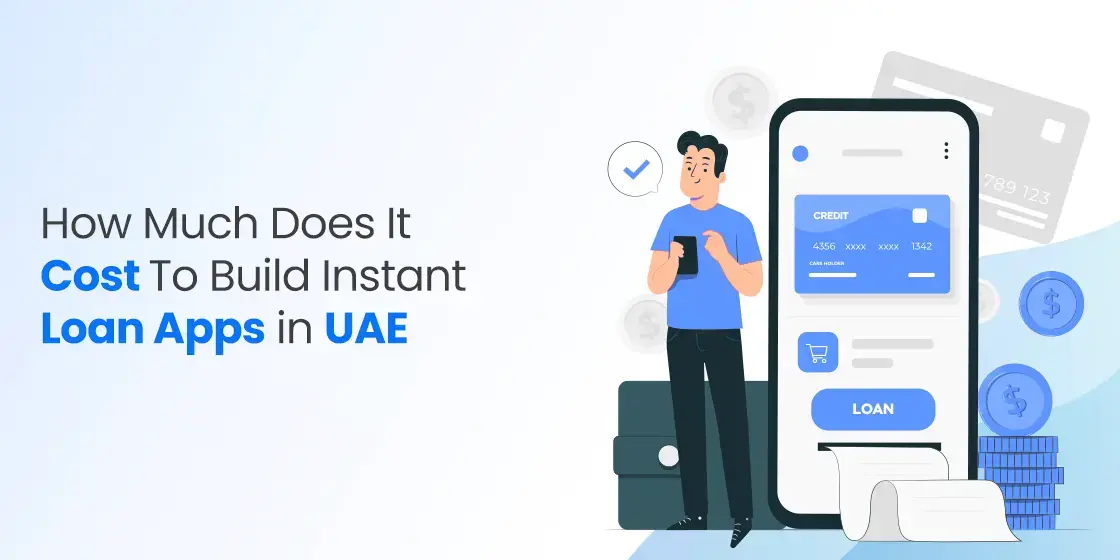Table of Content
Discover the Cost Factors Involved in Building a Web App Like Hukoomi
Qatar’s Hukoomi app stands as one of the world’s most sophisticated government digital platforms, serving over 1.84 million annual visitors with access to more than 1,400 services—650 of which can be completed entirely online. But here’s what most people don’t realize about building a similar platform: the costs involved go far beyond simple web development.
If you’re considering developing a government web portal like Hukoomi app, you’re looking at an investment that ranges from $150,000 for a basic implementation to over $2 million for a comprehensive, enterprise-grade platform. The wide cost variation depends on factors that most development guides completely overlook.
This comprehensive analysis breaks down the real costs, technical requirements, and strategic considerations involved in building a government portal that can handle millions of users. Moreover, we will explore how professional web development services accomplish that while maintaining the security, compliance, and reliability standards that modern citizens expect.
Understanding Hukoomi App: More Than Just a Website

Before diving into costs, it’s crucial to understand what makes Hukoomi exceptional. This isn’t simply a government website—it’s a comprehensive digital ecosystem that has transformed how Qatar delivers public services.
- Scale and Scope: Hukoomi app currently hosts over 1,400 government services across 48 different government entities. More than 650 of these services support complete online transactions, from visa applications to business registrations. The platform processed nearly 9 million page views during a recent 9-month period, demonstrating the massive scale required for such systems.
- Integration Complexity: The platform seamlessly integrates with Qatar’s national ID smart card system, enabling secure digital signatures and authentication. This level of integration requires sophisticated identity management systems and compliance with government security standards that most commercial applications never encounter.
- Multi-Channel Service Delivery: Beyond the web portal, Hukoomi supports mobile applications, call center integration (accessible via 109 within Qatar), and physical service centers. This omnichannel approach requires careful architecture planning and significant technical infrastructure.
- Real-Time Data Synchronization: The platform maintains real-time connectivity with multiple government databases, ensuring citizens access current information whether they’re checking visa status, paying fees, or updating personal records. This synchronization happens across dozens of separate government systems.
Technical Architecture: The Foundation of Cost
The most significant cost driver in enterprise app development for a platform like the Hukoomi app isn’t the user interface—it’s the underlying technical architecture required to support millions of users while maintaining security, reliability, and performance standards.
Enterprise-Grade Infrastructure Requirements
Cloud-Native Architecture: Modern government ERP solutions require hybrid cloud deployments that combine public cloud scalability with private cloud security. For a Hukoomi-scale platform, you’re looking at architecture spanning multiple data centers with automatic failover capabilities. This infrastructure foundation alone represents $50,000-$100,000 in annual operating costs, not including the initial setup and configuration expenses.
Microservices-Based Development: Unlike traditional monolithic applications, government portals require microservices architecture to handle different agencies and service types independently. Each government department essentially becomes its own service module that can be updated without affecting others. The development complexity of microservices architecture typically increases initial development costs by 40-60% compared to traditional approaches, but provides essential scalability and maintenance benefits.
Identity and Access Management (IAM): Government portals require sophisticated identity management systems that can handle everything from citizen authentication to inter-agency access control. Hukoomi’s integration with Qatar’s national ID system exemplifies this complexity. A robust IAM system for government use typically costs $75,000-$150,000 to develop and implement, depending on the number of identity providers and security requirements.
Database and Data Management Systems
Multi-Database Architecture: Government portals typically require multiple database systems to handle different types of data and access patterns. This includes:
- Transactional databases for processing applications and payments
- Document management systems for storing and retrieving official documents
- Analytics databases for reporting and performance monitoring
- Archive systems for long-term data retention and compliance
The database architecture and migration planning for a government portal typically requires 200-400 development hours, representing $15,000-$30,000 in development costs.
Data Security and Encryption: Government data requires encryption both at rest and in transit, along with comprehensive audit trails for all data access. Implementing government-grade security typically adds 25-30% to overall development costs.
Integration Layer Development: The most complex aspect of government portal development is creating integration layers that can communicate with existing government systems. These systems often use legacy technologies and require custom integration solutions. Integration development typically represents 30-40% of total project costs, as each government agency may have different systems, data formats, and security requirements.
Feature Development: Beyond Basic Functionality

While the majority of people focus on basic features like user registration and information access, a true government portal like the Hukoomi app requires significantly more sophisticated functionality.
Citizen-Facing Features
Advanced Authentication Systems:
- Multi-factor authentication with national ID integration
- Biometric authentication support
- Social login capabilities with security compliance
- Password-less authentication options
- Session management across multiple devices
Development time: 120-180 hours Estimated cost: $8,000-$15,000
Service Request Management:
- Workflow engine for complex approval processes
- Document upload and verification systems
- Real-time status tracking with notifications
- Integration with payment processing systems
- Automated service routing based on citizen location or eligibility
Development time: 200-300 hours Estimated cost: $15,000-$25,000
Payment Integration: Government portals require integration with multiple payment systems, including credit cards, bank transfers, and often specialized government payment processors.
- PCI DSS compliant payment processing
- Integration with national payment systems
- Refund and dispute management
- Receipt generation and archival
- Integration with government accounting systems
Development time: 100-150 hours Estimated cost: $8,000-$12,000
Document Management:
- Secure document storage and retrieval
- Digital signature capabilities
- Document versioning and audit trails
- Format conversion and accessibility compliance
- Integration with government document standards
Development time: 150-250 hours Estimated cost: $12,000-$20,000
Administrative and Backend Features
Multi-Agency Management:
- Role-based access control for different government agencies
- Department-specific dashboards and reporting
- Inter-agency communication and workflow systems
- Resource sharing and permission management
Development time: 200-300 hours Estimated cost: $15,000-$25,000
Analytics and Reporting: Government portals require comprehensive analytics for performance monitoring, citizen satisfaction measurement, and regulatory compliance reporting.
- Real-time usage analytics
- Service performance monitoring
- Citizen satisfaction surveys and analysis
- Compliance reporting and audit trails
- Predictive analytics for service planning
Development time: 150-200 hours Estimated cost: $10,000-$16,000
Content Management:
- Multi-language content support (essential for diverse populations)
- Content approval workflows
- Automated content translation
- Accessibility compliance tools
- SEO optimization for government content
Development time: 100-150 hours Estimated cost: $8,000-$12,000
Security and Compliance: The Hidden Cost Multiplier
Government portals operate under security and compliance requirements that commercial applications rarely encounter. These requirements significantly impact both development costs and ongoing operational expenses.
Government-Grade Security Requirements to Build a Web App Like Hukoomi
Cybersecurity Framework Implementation: Government portals must comply with national cybersecurity frameworks, which typically require:
- Regular penetration testing and vulnerability assessments
- Implementation of zero-trust security architecture
- Advanced threat detection and response systems
- Incident response planning and testing
- Security operations center (SOC) integration
Security implementation typically adds 20-30% to total development costs and requires ongoing security maintenance contracts.
Data Privacy and Protection: With citizen data protection becoming increasingly important, government portals must implement comprehensive privacy protection measures:
- GDPR-style compliance for data handling
- Citizen data access and deletion rights
- Consent management systems
- Data minimization and retention policies
- Cross-border data transfer controls
Privacy compliance implementation: 80-120 hours Estimated cost: $6,000-$10,000
Audit and Compliance Systems: Government portals require comprehensive audit trails for all user actions, data access, and system changes. This includes:
- Immutable audit logs with blockchain verification
- Real-time compliance monitoring
- Automated compliance reporting
- Investigation and forensics capabilities
- Integration with government oversight systems
Compliance system development: 100-150 hours Estimated cost: $8,000-$12,000
Regulatory Compliance Costs
Accessibility Standards: Government portals must comply with accessibility standards like WCAG 2.1 AA, ensuring equal access for citizens with disabilities. Accessibility implementation typically adds 15-20% to frontend development costs and requires ongoing compliance testing.
Multi-Language Support: For diverse populations, government portals often require support for multiple languages with right-to-left text support and cultural adaptations. Multi-language implementation: 100-200 hours per additional language Estimated cost: $8,000-$16,000 per language
Development Methodology and Timeline
Building a government portal like Hukoomi requires a structured development approach that accommodates the complexity of government requirements while ensuring security and reliability.
Phase 1: Discovery and Planning (8-12 weeks)
Stakeholder Analysis and Requirements Gathering: Government projects involve multiple stakeholders across different agencies, each with specific requirements and constraints.
- Cross-agency requirement workshops
- Citizen journey mapping and user research
- Technical architecture planning
- Security requirement analysis
- Compliance framework development
This phase typically requires 300-500 hours of combined business analysis, technical architecture, and project planning time.
Estimated cost: $25,000-$40,000
Integration Planning: Understanding and planning integrations with existing government systems often represents the most complex aspect of the discovery phase.
- Legacy system analysis and documentation
- API development planning
- Data migration strategy
- Security integration planning
- Performance and scalability planning
Integration planning: 200-300 hours Estimated cost: $15,000-$25,000
Phase 2: Core Platform Development (16-24 weeks)
Foundation Development:
- Basic portal infrastructure and security framework
- User authentication and identity management
- Core content management system
- Basic citizen services functionality
Foundation development: 800-1,200 hours Estimated cost: $60,000-$100,000
Service Integration Development:
- Integration with government databases and systems
- Payment processing integration
- Document management system development
- Workflow engine implementation
Integration development: 600-1,000 hours Estimated cost: $45,000-$80,000
Phase 3: Advanced Features and Testing (12-16 weeks)
Advanced Feature Development:
- Analytics and reporting systems
- Mobile application development
- Advanced search and AI features
- Multi-language support implementation
Advanced features: 400-600 hours Estimated cost: $30,000-$50,000
Comprehensive Testing: Government portals require extensive testing including security testing, load testing, accessibility testing, and user acceptance testing across multiple agencies.
Testing and quality assurance: 300-500 hours Estimated cost: $20,000-$35,000
Phase 4: Deployment and Launch (6-8 weeks)
Production Deployment:
- Infrastructure setup and configuration
- Security hardening and penetration testing
- Performance optimization and load testing
- Staff training and documentation
Deployment and launch: 200-300 hours Estimated cost: $15,000-$25,000
Realistic Cost Breakdown for 2025

Based on current market rates and the complexity requirements for a government portal like Hukoomi, here’s a realistic cost breakdown.
Basic Government Portal ($150,000 – $300,000)
Scope:
- Support for 10-20 basic government services
- Basic citizen authentication and registration
- Simple document upload and status tracking
- Basic payment processing integration
- Content management for 2-3 government agencies
Development Team:
- Project manager (part-time)
- 2-3 full-stack developers
- 1 UI/UX designer
- 1 DevOps engineer
- Security consultant (part-time)
Timeline: 6-9 months
This level represents the minimum viable platform for a small government or specific department, not a comprehensive national portal.
Intermediate Government Portal ($300,000 – $800,000)
Scope:
- Support for 50-100 government services
- Advanced authentication with multi-factor support
- Integration with 5-10 government systems
- Advanced workflow management
- Mobile application development
- Basic analytics and reporting
Development Team:
- Full-time project manager
- 4-6 full-stack developers
- 2 UI/UX designers
- 2 DevOps engineers
- Security specialist
- Business analyst
Timeline: 9-15 months
This level would be appropriate for a state or provincial government portal with moderate complexity.
Enterprise Government Portal ($800,000 – $2,000,000+)
Scope:
- Support for 200+ government services like Hukoomi app
- Advanced integration with 20+ government systems
- Multi-language support
- Advanced AI and analytics capabilities
- Comprehensive mobile applications
- Advanced security and compliance features
- 24/7 support and monitoring
Development Team:
- Senior project manager
- 8-12 specialized developers
- 3-4 UI/UX designers
- 3-4 DevOps engineers
- Security architect
- Business analysts
- Quality assurance specialists
Timeline: 15-24 months
This level represents the complexity required for a national portal like Hukoomi.
Technology Stack Considerations
The choice of technology stack like coding languages for app development significantly impacts both development costs and long-term maintainability.
Frontend Technologies
Modern Web Technologies:
- React.js or Angular for complex user interfaces
- Progressive Web App (PWA) capabilities for mobile optimization
- TypeScript for enhanced code reliability
- Modern CSS frameworks for responsive design
Frontend development typically represents 25-30% of total development costs.
Accessibility and Multi-Language Support:
- WCAG 2.1 AA compliance implementation
- Right-to-left language support for Arabic markets
- Screen reader compatibility and keyboard navigation
- Cultural adaptation for local preferences
Accessibility features add approximately 15-20% to frontend development costs.
Backend Architecture
Enterprise-Grade Backend:
- Microservices architecture using Docker and Kubernetes
- API-first development for third-party integrations
- Message queue systems for handling high loads
- Caching layers for improved performance
Backend development typically represents 40-45% of total development costs.
Database Solutions:
- PostgreSQL or Oracle for transactional data
- MongoDB for document storage
- Redis for caching and session management
- Elasticsearch for advanced search capabilities
Database development, mobile app development frameworks, and optimization typically requires 10-15% of total development time.
Security and Integration Technologies
Security Framework:
- OAuth 2.0 and OpenID Connect for authentication
- JWT tokens for secure API communication
- SSL/TLS encryption for all data transmission
- Web Application Firewall (WAF) for attack protection
Security implementation typically adds 20-25% to development costs.
Integration Technologies:
- RESTful APIs for modern system integration
- SOAP services for legacy system compatibility
- Message brokers for asynchronous communication
- ETL tools for data synchronization
Integration development often represents the largest single cost component at 30-40% of total costs.
Cost Optimization Strategies

While government portal development is expensive, there are several strategies to optimize costs without compromising functionality or security.
Phased Implementation Approach
Phase 1: Core Services (Months 1-6) Start with the most critical 20-30 government services that have the highest citizen usage. This allows for early user feedback and demonstrates value while spreading costs over time.
Initial phase budget: $200,000-$400,000
Phase 2: Expanded Services (Months 7-12) Add additional services and more sophisticated features based on user feedback from Phase 1.
Expansion phase budget: $150,000-$300,000
Phase 3: Advanced Features (Months 13-18) Implement advanced analytics, AI features, and additional integrations.
Advanced phase budget: $100,000-$250,000
Leveraging Existing Solutions
Government-Specific Platforms: Consider platforms specifically designed for government use, such as:
- Microsoft Government Cloud solutions
- AWS GovCloud infrastructure
- Salesforce Government Cloud for citizen services
These solutions often provide pre-built compliance and security features that can reduce development time by 20-30%.
Open Source Solutions: Where appropriate, leverage open source solutions for non-sensitive components:
- Content management systems
- Authentication frameworks
- Analytics and reporting tools
Open source adoption can reduce development costs by 15-25% while maintaining security standards.
Outsourcing and Partnership Strategies
Hybrid Development Teams: Combine in-house government expertise with specialized external development teams:
- Internal team for requirements, security, and oversight
- External specialists for technical development and integration
- Managed services for infrastructure and operations
This approach can reduce costs by 20-40% by outsourcing mobile app development, while maintaining control over sensitive aspects.
Public-Private Partnerships: Consider partnership models where private sector companies invest in platform development in exchange for long-term maintenance contracts or technology licensing opportunities.
Future-Proofing Your Investment
Government portals typically operate for 10-15 years before major overhauls. Planning for future requirements ensures long-term value.
Artificial Intelligence:
- Chatbots for citizen support and service guidance
- Automated document processing and verification
- Predictive analytics for service planning
- Natural language processing for multi-language support
AI integration budget: $100,000-$300,000 for comprehensive implementation
Blockchain Technology:
- Immutable audit trails for government transactions
- Secure document verification and timestamping
- Inter-agency data sharing with cryptographic verification
- Citizen identity verification and credentials
Blockchain integration budget: $75,000-$200,000 for pilot implementation
Internet of Things (IoT):
- Smart city service integration
- Real-time data collection for government services
- Environmental monitoring and reporting
- Traffic and transportation integration
IoT integration planning: $50,000-$150,000 for framework development
Choosing the Right Development Partner
Selecting a development partner for a government portal requires evaluation criteria beyond typical commercial development projects.
Essential Partner Qualifications
Government Experience:
- Previous experience with government portal development
- Understanding of regulatory and compliance requirements
- Security clearance capabilities for sensitive projects
- Knowledge of government procurement processes
Technical Capabilities:
- Enterprise-scale architecture experience
- Government-grade security implementation
- Legacy system integration expertise
- Multi-language and accessibility implementation
Project Management:
- Experience with government project timelines and requirements
- Change management capabilities for large organizations
- Stakeholder management across multiple agencies
- Risk management and contingency planning
Evaluation Criteria
Portfolio Assessment: Review previous government projects, focusing on:
- Scale and complexity similar to your requirements
- Security and compliance implementation
- Citizen adoption and satisfaction results
- Long-term maintenance and support success
Technical Assessment:
- Architecture design capabilities for enterprise scale
- Security implementation methodology
- Testing and quality assurance processes
- DevOps and infrastructure management
Reference Checks:
- Contact previous government clients
- Verify project outcomes and satisfaction
- Assess ongoing support and maintenance quality
- Evaluate partnership approach and communication
FAQs
| What is the estimated cost to build a web app like Hukoomi? The cost to build a web app like Hukoomi typically ranges from $150,000 to $500,000, depending on the complexity and scope of features. A basic version with essential government services might cost around $150,000-$250,000, while a comprehensive platform matching Hukoomi’s full functionality could reach $300,000-$500,000. Factors influencing the cost include multi-language support, integration with government databases, advanced security features, and the number of services offered. |
| What factors affect the cost to build a web app like Hukoomi? Several key factors impact the cost to build a web app like Hukoomi: the number of government services integrated (each service requires custom development), multi-language support (Arabic and English), advanced security and encryption requirements, integration with existing government databases and systems, user authentication and digital identity verification, responsive design for multiple devices, and ongoing compliance with government regulations. Additionally, the development team’s location and expertise level significantly influence pricing. |
| How long does it take and what’s the development cost breakdown for a Hukoomi-like web app? Building a web app like Hukoomi typically takes 12-18 months for a full-featured platform. The cost breakdown includes: planning and analysis (10-15% of total cost), UI/UX design (15-20%), backend development (30-35%), frontend development (20-25%), third-party integrations (10-15%), testing and quality assurance (10-15%), and project management (5-10%). The extended timeline is due to the complex government service integrations and security requirements that characterize platforms like Hukoomi. |
| Is it more cost-effective to build a custom web app like Hukoomi or use existing solutions? The cost to build a web app like Hukoomi from scratch is generally higher initially but offers better long-term value for government entities. Custom development ($150,000-$500,000) provides complete control over features, security, and integration capabilities. While existing government portal solutions might seem cheaper upfront ($50,000-$150,000), they often require extensive customization, licensing fees, and may not meet specific regulatory requirements. Custom development ensures the platform can evolve with changing government needs and citizen expectations. |
| What ongoing costs should be considered after building a web app like Hukoomi? Beyond the initial cost to build a web app like Hukoomi, ongoing expenses include hosting and infrastructure (typically $2,000-$10,000 monthly for high-traffic government portals), maintenance and updates (15-20% of initial development cost annually), security monitoring and compliance audits ($20,000-$50,000 annually), customer support and help desk services, regular feature updates and improvements, and integration maintenance with evolving government systems. These ongoing costs are essential for maintaining the platform’s security, performance, and compliance with government standards. |
Conclusion
Building a government web portal like Hukoomi represents a significant strategic investment that extends far beyond simple website development. The costs involved reflect the complexity of creating secure, scalable, and citizen-focused digital government services. The most successful government portal projects approach development as a long-term digital transformation initiative rather than a single technology project. This requires:
- Strategic Planning: Understanding how the portal fits into broader digital government initiatives and citizen service strategies.
- Realistic Budgeting: Accounting for the full complexity of government requirements, including security, compliance, integration, and ongoing operational costs.
- Phased Implementation: Spreading costs and risks across multiple phases while delivering value to citizens throughout the development process.
- Partnership Approach: Combining government expertise with specialized technical capabilities to ensure both compliance and innovation.
- Future-Proofing: Designing architecture and processes that can evolve with changing citizen expectations and emerging technologies.
The investment in a platform like Hukoomi pays dividends far beyond the initial development costs. Qatar’s success with Hukoomi app—serving 1.84 million annual visitors across 1,400+ services—demonstrates how effective government portals can transform citizen experiences while improving operational efficiency.
As governments worldwide accelerate digital transformation initiatives, the demand for sophisticated citizen service platforms will only increase. The organizations that invest wisely in comprehensive digital government platforms today will be best positioned to serve their citizens effectively in the digital future.

Empower your digital journey with StruqtIO - Your dedicated partner for cutting-edge custom software development, innovation, and digital transformative solutions. Harness the power of technology to elevate your business and redefine your digital landscape today.


